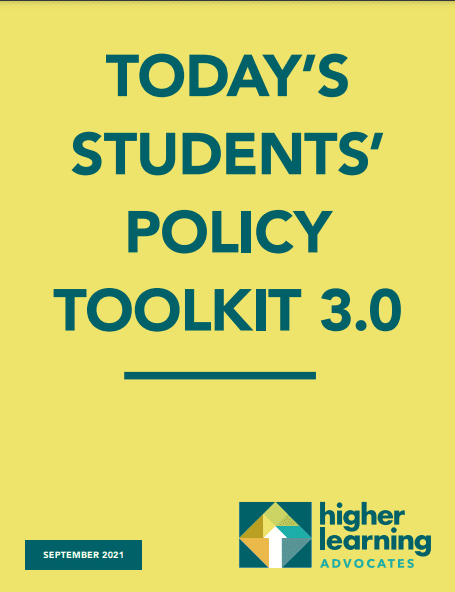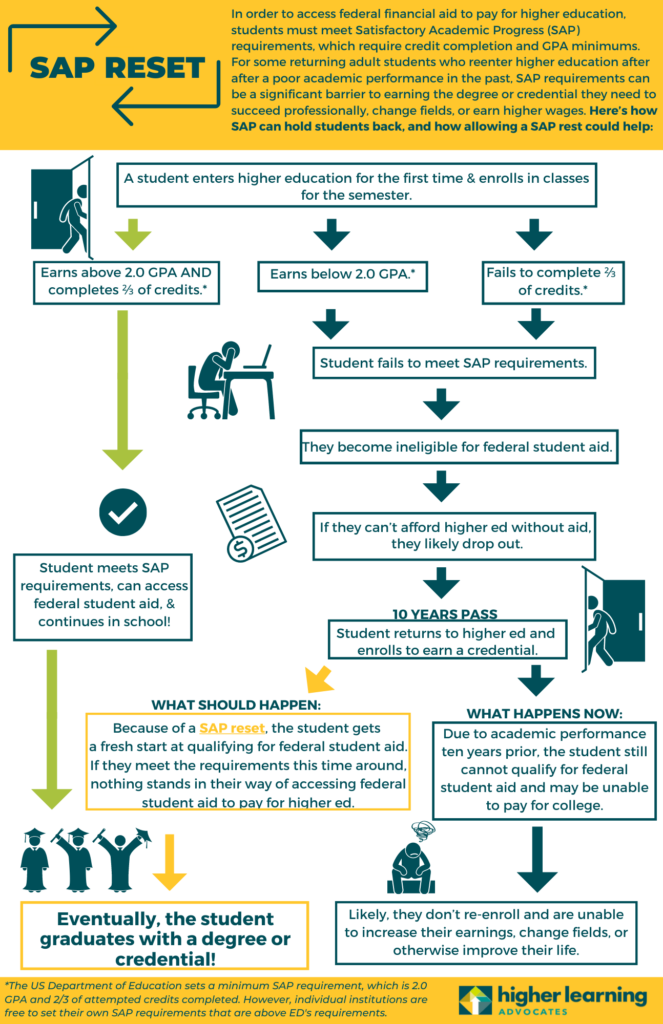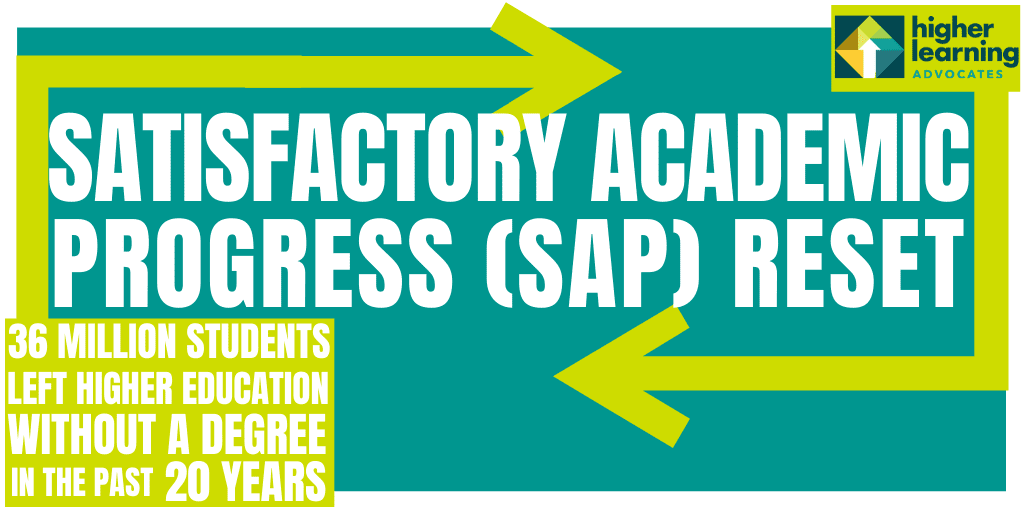Short-Term Pell: Expanding Opportunity and Widening Pathways for Today’s Students
Introduction For over 50 years, the Pell Grant, a cornerstone of federal financial aid for today’s students, has supported millions in accessing higher education. In the 2021-22 academic year alone, 6.1 million students utilized the Pell Grant to take one step closer to reaching their educational and career goals. As the cost of postsecondary education…
Read MoreSatisfactory Academic Progress: Making Financial Aid Work for Today’s Students
A satisfactory academic progress, or SAP, reset can make college more affordable for low-income Americans, especially the 39 million with some college and no credential (SCNC) population. Higher Learning Advocates’ analyzed how in a new higher education policy brief, Satisfactory Academic Progress: Making Financial Aid Work for Today’s Students. In the brief, we highlight how…
Read MoreBraided Funding Backgrounder
Today’s students follow myriad pathways to and through higher learning. Providing today’s students with wraparound supports and tools to navigate complex career pathways systems can greatly boost their chances of success, but requires multiple resources. For students, this means the programs they rely on for career and income mobility have limited sets of resources from…
Read MoreHigher Education Policy Toolkit
Education creates opportunities and is integral to maintaining America’s globally competitive economy. An educated workforce begins in local communities and expands to the state, the nation, and the world. Higher Learning Advocates higher education policy toolkit for the 118th Congress focuses on connecting opportunity, supporting students, and delivering value with solutions to help strengthen our nation’s…
Read MoreSatisfactory Academic Progress (SAP) Backgrounder
Satisfactory Academic Progress (SAP) is a federal provision that requires institutions to establish criteria a student must meet in order to remain eligible for federal student aid, such as Pell Grants and student loans. Typically, to meet SAP requirements, students must meet a minimum grade point average (GPA), or its equivalent, and complete a minimum…
Read MorePolicy Toolkit 3.0
Today’s students are more diverse than any previous generation of college students: they’re diverse in age, race, and income level. They’re more mobile and may not live on campus. Most participate in the workforce, either full-time or part-time. Work and family responsibilities beyond the classroom—whether that is on-campus or online—often compete with the educational goals…
Read MoreSAP Reset Infographic
In order to access federal financial aid to pay for higher education, students must meet Satisfactory Academic Progress (SAP) requirements, which require credit completion and GPA minimums. For some returning adult students who reenter higher education after a poor academic performance in the past, SAP requirements can be a significant barrier to earning the degree…
Read MoreChampion Check-In: Aaron Thompson, President, Kentucky Council on Postsecondary Education
Kentucky Council on Postsecondary Education President Aaron Thompson shares what he learned from students through a listening tour across Kentucky, how his own background shaped his passion for higher education, and more.
Read MoreWhat Works for Today’s Students—Satisfactory Academic Progress Reset
Over the past 20 years, 36 million students have enrolled in higher education but have not finished a degree. Although today’s students are completing college at higher rates than before, four out of ten students still do not earn a degree within six years. Download our new policy brief, What Works for Today’s Students—Satisfactory Academic Progress Reset,…
Read MoreStackable Credentials Backgrounder
Author: India Heckstall Today’s students are more diverse than previous generations—they are more likely to be workers, parents, and returning adults—and do not always follow a single and consistent path to employment. As our current workforce requires lifelong learning and re-skilling, individuals now require multiple entry and exit points through postsecondary education and the workforce,…
Read More




